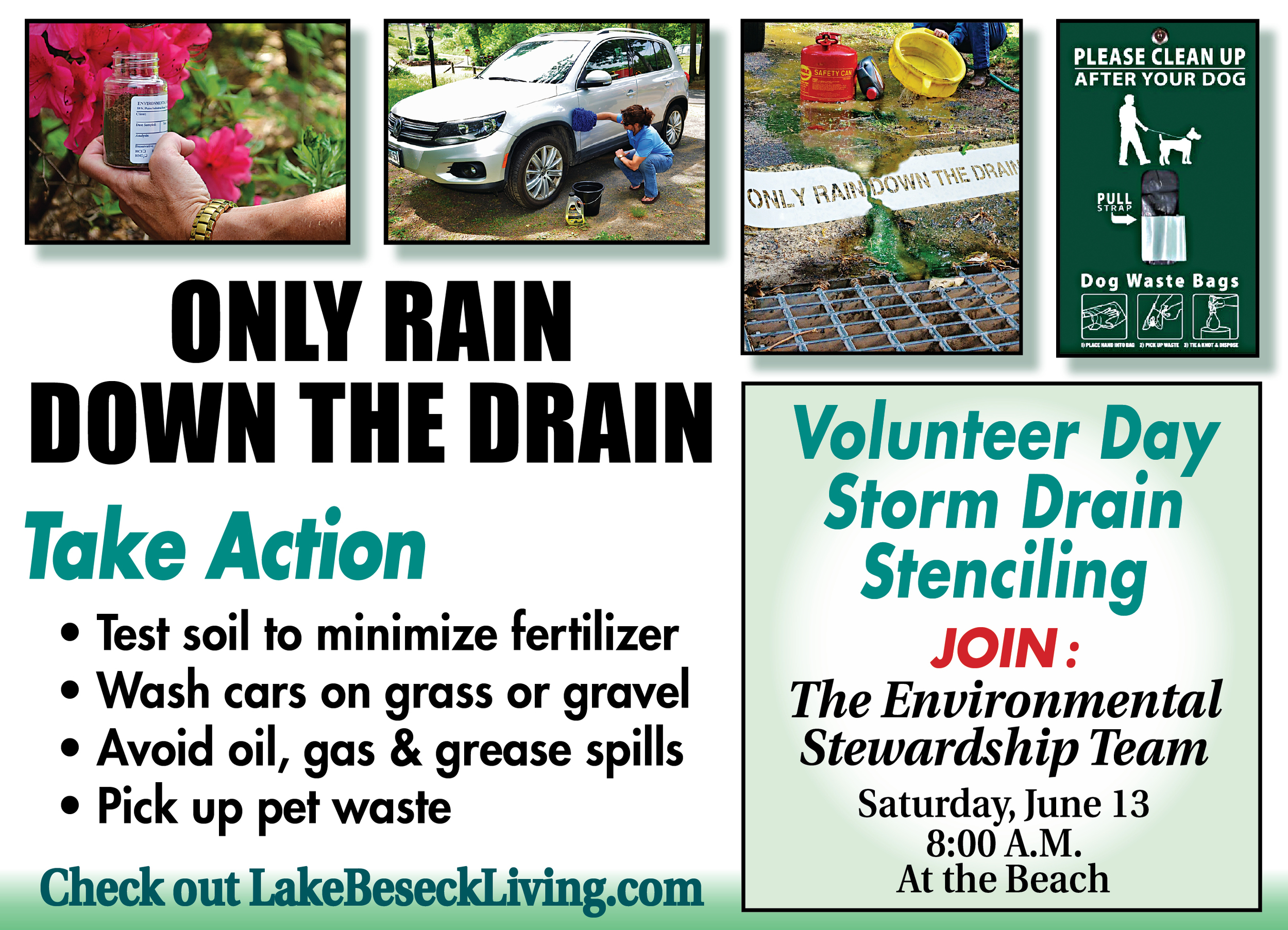OUTREACH FOR AN IMPROVED WATERSHED
Protecting our Lake - Invasive Threat
Some of you may be familiar with the threat of Hydrilla, some may not know that a very aggressive strain that is taking over areas of the CT River. This can easily become a threat to our lake, like no other. Please take time out of your day to watch this powerful video to learn what is happening.
"Hydrilla is an invasive aquatic plant that has wreaked havoc on the native ecosystems and intrinsic quality of lakes, ponds, and rivers in the southeast United States. CAES IAPP has recently discovered a new extremely aggressive strain of hydrilla in the Connecticut river and its tributaries. Frequently the stands of hydrilla are so dense they prevent boat traffic. Although not yet found in any Connecticut lakes, the chances for introduction of the hydrilla into Lake Beseck by boat movement is acute. "Clean, Drain and Dry" disinfection procedures should be adhered to by all boats entering the lake. Inspections of boats at the State launch site would also be beneficial. Regular aquatic plant surveys are a useful tool for catching new introductions when they are easiest to eradicate." ~ Greg Bugbee CAES IAPP
There are many local resources that will keep you in the loop about threats such as this. The Lake Beseck Association, The Town of Middlefield Lake Beseck Environment Committee, Middlefield Park & Rec, Lake Beseck Living, and the newest - Lake Beseck Friends of the Lake all working together to raise awareness about issues that need attention. Please invite people to subscribe to these resources. One of the actions that the Town is taking to protect our Lake is applying for a grant to help raise awareness...
"Hydrilla is in the CT River just 5 miles from Beseck Lake. If it was to become established in Beseck Lake it would be much worse than any other aquatic invasive species that we have had to push back against over the years. It is important the Town residents become aware of this threat and that we educate the boating public as to best boating behaviors. The Beseck Lake Environment Committee has done a good amount of outreach concerning aquatic invasive species and has been looking for additional approaches to this problem. As a result, the Town has applied for a grant for the control of aquatic invasive species which is being provided by the Connecticut Department of Energy and Environmental Protection (DEEP). The purpose of this grant is to provide staffing at the state boat ramp on Baileyville Road on weekends between Memorial Day and Labor Day. The staff will be trained as Boating Assistant Educators by DEEP. They will educate the recreational boaters about aquatic invasive species, administer the CT DEEP Boating questionnaire on boating behaviors, have knowledge about aquatic invasive species and conduct volunteer invasive species inspections of vessels entering the lake. Currently, populations of invasive plant species Myriophyllum spicatum (Eurasian watermilfoil) and Potamogeton crispis (Curly-leaf pondweed) inhabit the lake. The project grant is to prevent the spread of those invasive species to other lakes and prevent the introduction of other invasive species. For further information please contact the chairman of the Beseck Lake Environment Committee Rick Santos via my office at 860.349.7114." ~ Edward P. Bailey, Town of Middlefield First Selectman
Something interesting that was learned from CTDEEP recently is that kayaks are very often the culprits of invasive plant contamination. I think this shocked many of us. Thanks everyone for doing your part in protecting our Lake.
A quick 30 second video where Larry Marsicano, AER teaches Park & Rec Director, Hannah Malcolm how a simple Secchi Disk can assist beach staff in monitoring water quality.
Mark your calendars and please share this Earth Day event with friends. Thank you!
Due to recent complaints about dog walkers not picking up after their pets, Lake Beseck Living is reaching out as Earth Day approaches to remind people why it is important to pick up after your pets.
Dogs harbor viruses, bacteria and parasites that can be transmitted to humans - including harmful pathogens like e coli, giardia and salmonella. (A single gram contains an estimated 23 million bacteria.) When it rains, pet waste washes into our storm drains and enters the lake. This also promotes weed and algae growth. Please carry disposable bags while walking your dogs 🐕 to pick up and dispose of pet waste 💩 properly.
Earth Day task: Please spread the word. Thank you!
OPEN HOUSE sponsored by the Lake Beseck Environment Committee. Join us at the Beach from 9:30 A.M. - 11:30 A.M. Grab a coffee, donut and learn about the LakeSmart improvements! Activities every half hour. Meet Scientists, Res. State Troopers, Lifeguard Staff, Science Activities for Kids and more!!
Get to Know Your Watershed
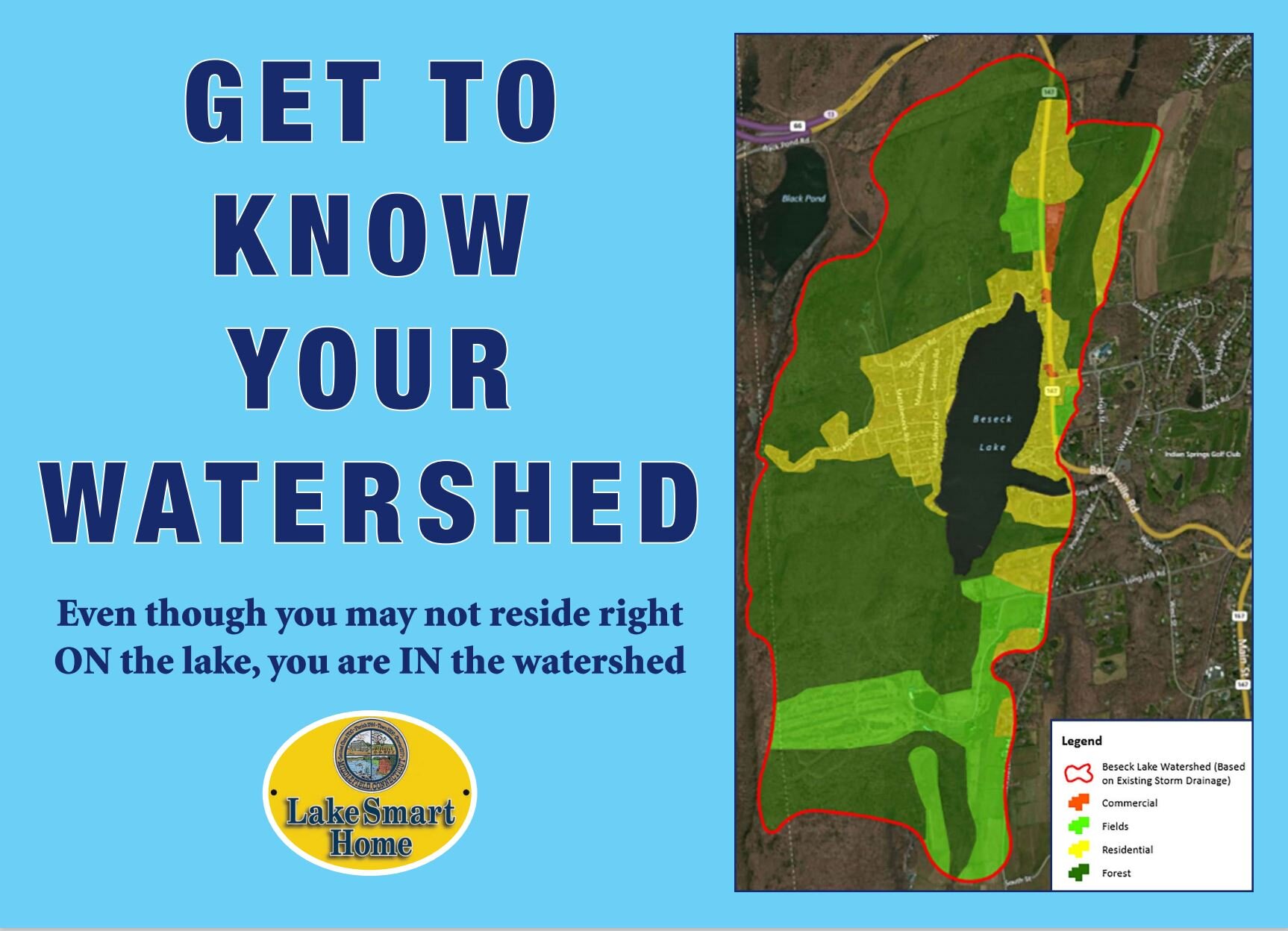
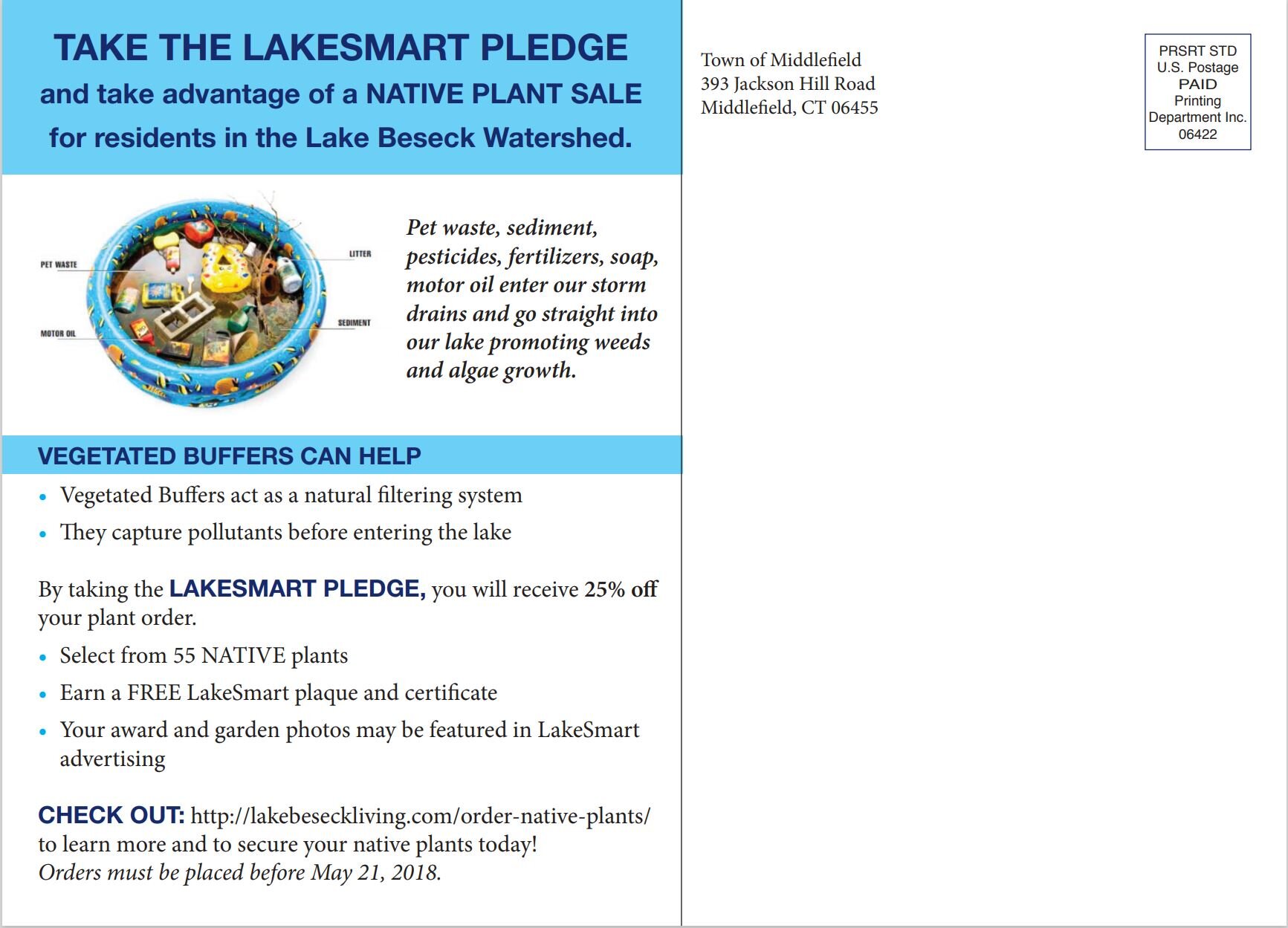
Lake Beseck Environment Committee launches the LakeSmart Home Program! Learn more at the Breakfast Gardening Workshop on April 22, 2017!
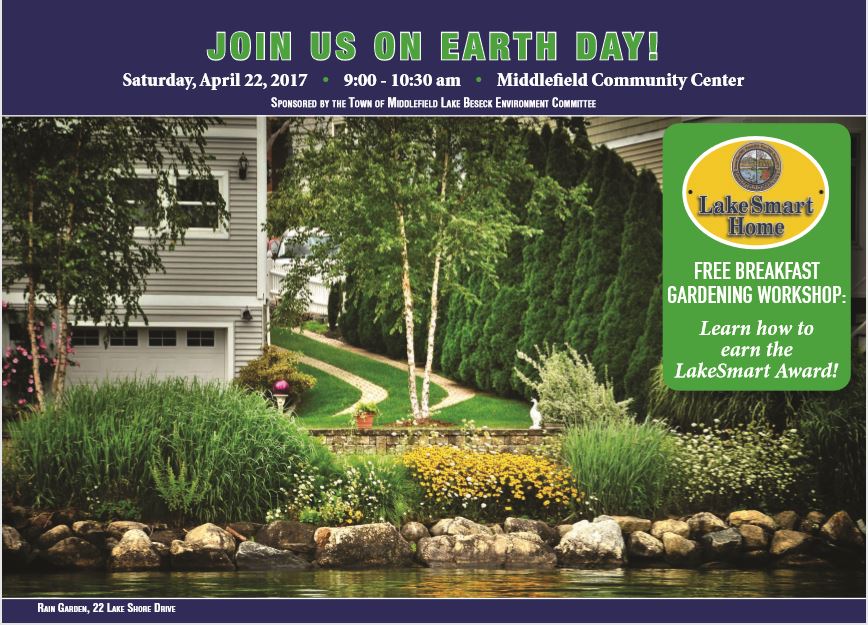

Check out photos of the Storm Drain Stenciling Project that helped to raise awareness about storm water runoff in the event gallery link, below...
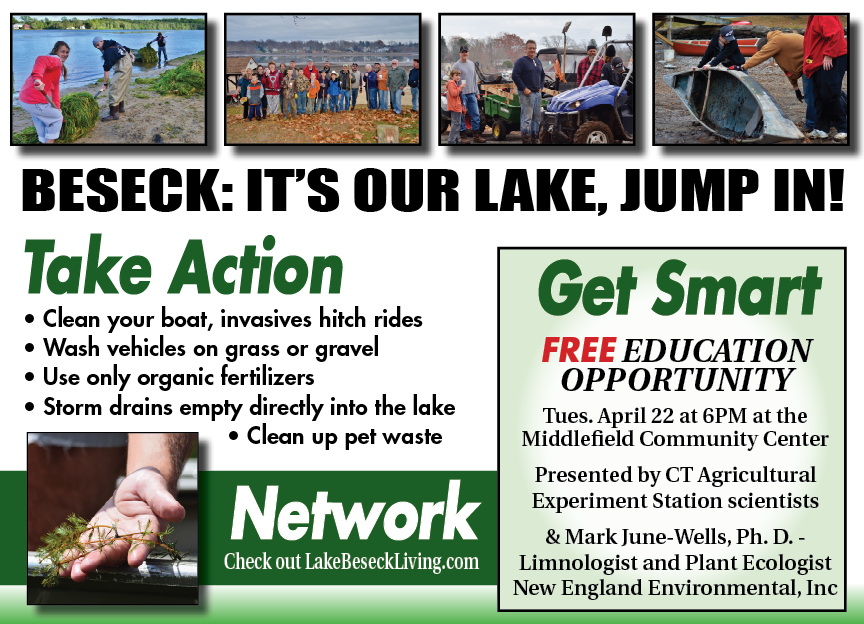
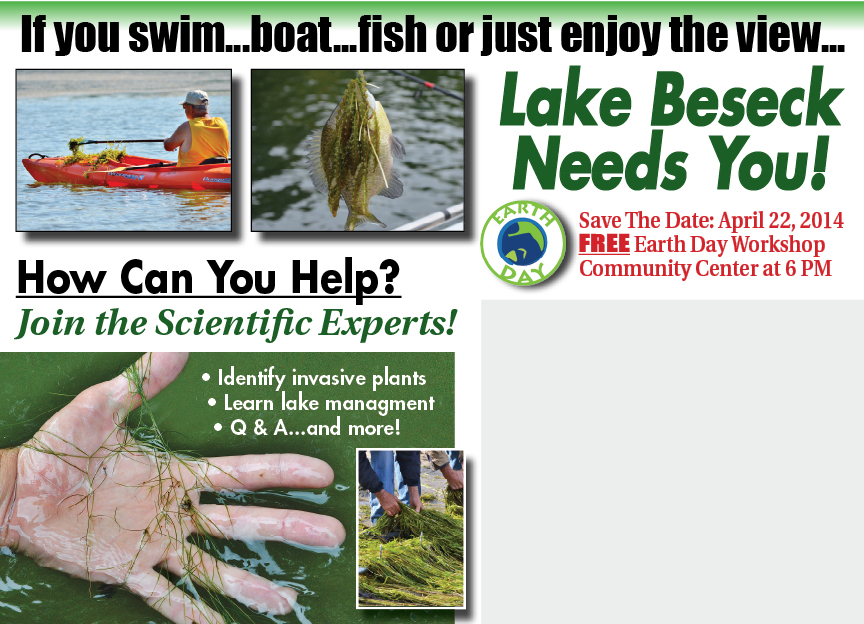
How you can help...
New Legislation Limits Use of Phosphorus Lawn Fertilizers
Increasingly the detrimental effects of phosphate on bodies of water, such as lakes are becoming more apparent. The Connecticut General Assembly's Environment Committee, introduced legislation this year that limits the use of phosphorus in lawn fertilizers. Senate Bill 254 reduces the effects of phosphate fertilizer runoff on the state's waters. This law tries to limit phosphate contamination by restricting the use of phosphate.
So what is phosphorus and what does it do?
The Department of Energy and Environmental Protection provides this explanation: “Phosphorus is a naturally occurring element that is essential to support plant growth. When present in excessive amounts, phosphorus contributes to a process called “eutrophication” that can impair both aquatic life and recreational use of Connecticut’s water resources. Eutrophication, or nutrient enrichment, is a serious threat to water quality in Connecticut. Excessive loading of phosphorus to surface waters as a result of discharges from industrial and municipal water pollution control facilities (WPCF) or nonpoint sources such as runoff from urban and agricultural lands, can lead to algal blooms, including blooms of noxious blue green algae, reduction in water clarity, and in extreme cases, depletion of oxygen, fish kills, and other impairments to aquatic life.”
The bill becomes law on January 1, 2013 and is summarized as follows:
No person shall apply fertilizer, soil amendment, or compost that contains phosphate to an established lawn, except when: (1) A soil testing method approved by the Commissioner of Agriculture and performed within the previous two years indicates the soil is lacking in phosphorus, or if (2) fertilizer, soil amendment or compost containing phosphate is used for establishing new grass or repairing a lawn with seed or sod.
If these exceptions are met there are further restrictions: No fertilizer, soil amendment, or compost that contains phosphate shall be applied to any lawn during the period beginning December 1st and ending March 15th of the following year; to any portion of a lawn that is located 20 feet or less from any brook, stream, river, lake, pond, sound or any other body of water, except if fertilizer, soil amendment or compost is applied with the use of a drop spreader, rotary spreader with a deflector or targeted spray liquid, application may occur on a lawn not less than15 feet from a body of water. No fertilizer, soil amendment, or compost that contains phosphate shall be applied to any impervious surface that prevents or restricts absorption of storm water such as porous paving, paver blocks, gravel, crushed stone, decks, patios etc.
Any person in violation of this law shall be assessed a civil penalty by the Commissioner of Agriculture of $500. The law does not apply to property classified as agricultural land, or a golf course.



